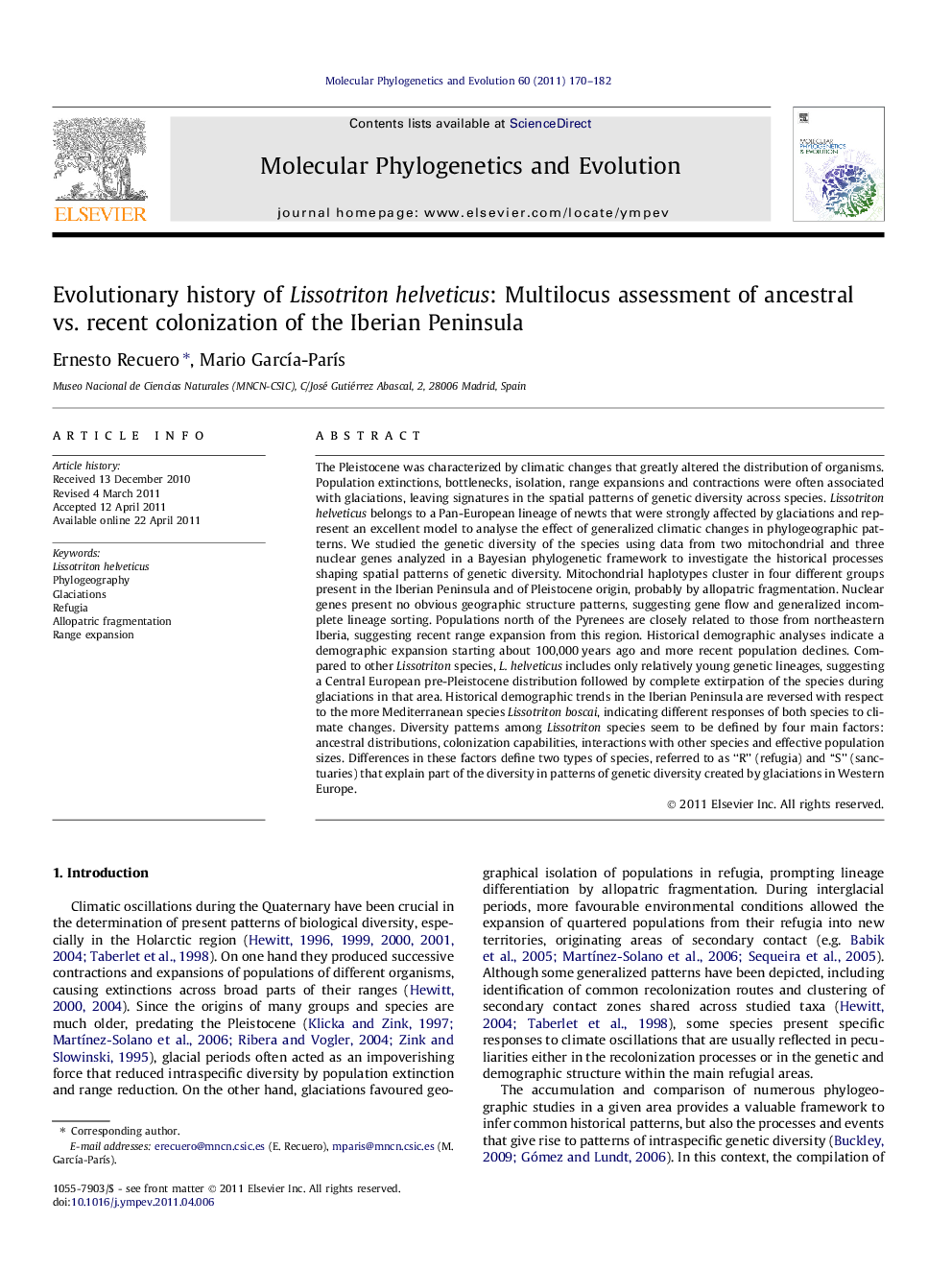| کد مقاله | کد نشریه | سال انتشار | مقاله انگلیسی | نسخه تمام متن |
|---|---|---|---|---|
| 2834196 | 1164298 | 2011 | 13 صفحه PDF | دانلود رایگان |

The Pleistocene was characterized by climatic changes that greatly altered the distribution of organisms. Population extinctions, bottlenecks, isolation, range expansions and contractions were often associated with glaciations, leaving signatures in the spatial patterns of genetic diversity across species. Lissotriton helveticus belongs to a Pan-European lineage of newts that were strongly affected by glaciations and represent an excellent model to analyse the effect of generalized climatic changes in phylogeographic patterns. We studied the genetic diversity of the species using data from two mitochondrial and three nuclear genes analyzed in a Bayesian phylogenetic framework to investigate the historical processes shaping spatial patterns of genetic diversity. Mitochondrial haplotypes cluster in four different groups present in the Iberian Peninsula and of Pleistocene origin, probably by allopatric fragmentation. Nuclear genes present no obvious geographic structure patterns, suggesting gene flow and generalized incomplete lineage sorting. Populations north of the Pyrenees are closely related to those from northeastern Iberia, suggesting recent range expansion from this region. Historical demographic analyses indicate a demographic expansion starting about 100,000 years ago and more recent population declines. Compared to other Lissotriton species, L. helveticus includes only relatively young genetic lineages, suggesting a Central European pre-Pleistocene distribution followed by complete extirpation of the species during glaciations in that area. Historical demographic trends in the Iberian Peninsula are reversed with respect to the more Mediterranean species Lissotriton boscai, indicating different responses of both species to climate changes. Diversity patterns among Lissotriton species seem to be defined by four main factors: ancestral distributions, colonization capabilities, interactions with other species and effective population sizes. Differences in these factors define two types of species, referred to as “R” (refugia) and “S” (sanctuaries) that explain part of the diversity in patterns of genetic diversity created by glaciations in Western Europe.
Figure optionsDownload as PowerPoint slideHighlights
► Extant genetic diversity in Lissotriton helveticus is of Pleistocene origin.
► MtDNA diversity in L. helveticus is geographically structured in Iberia.
► Nuclear markers show signs of gene flow and incomplete lineage sorting.
► Lissotriton colonization patterns are determined by historical – ecological factors.
► Patterns of European genetic diversity are ruled by sanctuary and refugium models.
Journal: Molecular Phylogenetics and Evolution - Volume 60, Issue 1, July 2011, Pages 170–182